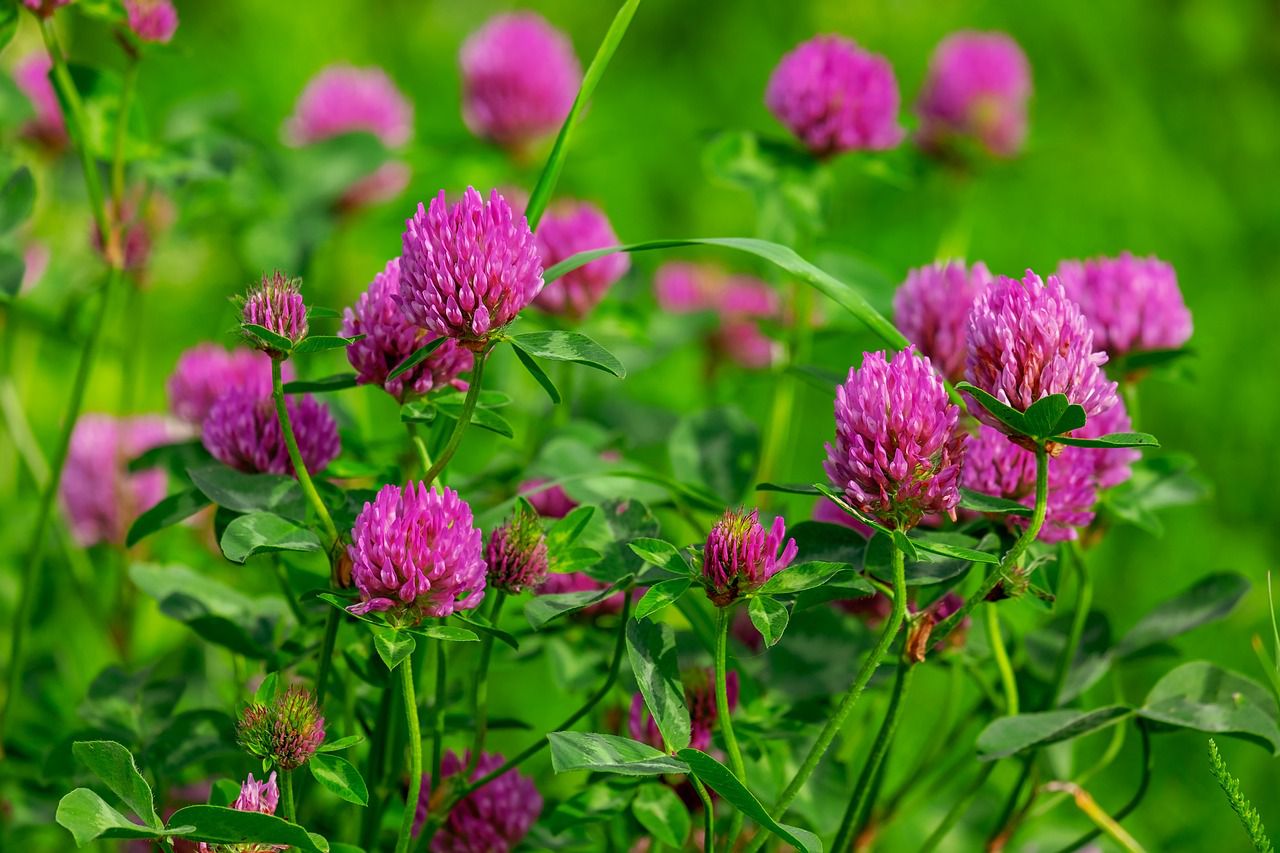Use these straightforward strategies to prevent clover from competing with turfgrass.
White clover is a fierce competitor of turfgrass. This tenacious perennial hugs the ground, effectively evading a mower deck. Harvesting nitrogen from the atmosphere and transforming it into a usable plant-friendly form, white clover grows well, and even thrives, in poor soil where traditional turfgrasses fail to gain traction due to lack of nitrogen. White clover also has notable cold hardiness; severe winter rarely sets it back. Sideline its spread with our five essential tips for getting rid of clover in your lawn.
1. Start with a Healthy Lawn
Here’s a secret that clover doesn’t want you to know: it can't compete with a thriving stand of turfgrass. A healthy lawn will overpower weeds of all types, including white clover, in time. When growing in good soil and fortified with ample moisture, turfgrass spreads more vigorously than white clover. Turfgrass essentially eliminates white clover by growing into a clover colony, putting up new stems, and reducing clover’s ability to capture sunlight. Soon clover disappears because it can’t sustain itself without sunlight.

A healthy lawn begins with good soil. Nutrient-rich, well-drained loam is the foundation of a lush lawn. Adequate moisture is another component. Turfgrass thrives when it receives about 1 inch of water per week from rainfall or irrigation.
Finally, mowing height impacts turfgrass health. Lawn grass is best maintained at about 3 inches tall. Maintaining a lawn at taller or shorter mowing heights promotes thin coverage, potentially opening ground for weed seeds to take root. Warm-season grasses, such as centipedegrass and zoysiagrass, are an exception to this guideline. They grow well at a mowing height of 2 inches.
2. Fortify Your Turf with Nitrogen
Fertilizing your lawn is an effective way to limit the growth of clover and in many cases eliminate it altogether. Generally, lawns with a white clover infestation are growing in soil that's low in nitrogen. White clover can harvest nitrogen for the atmosphere to satisfy its growing needs, but turfgrass isn’t capable of that feat. Provide nitrogen fertilizer and give the turfgrass the upper hand.
For quick results, apply synthetic nitrogen fertilizer formulated for lawns. Quickly available to plants and easy to apply, synthetic nitrogen fertilizer pellets can be harmful to the environment if not applied properly. Applying too much fertilizer or spreading it near waterways can lead to runoff that destroys native habitats. Follow package directions carefully when applying fertilizer. Synthetic lawn fertilizer can be applied when turf begins growing in spring and again in early fall.
A natural way to boost soil health and available nitrogen is to spread a thin layer of compost over turfgrass in early spring and again in fall. Well-decomposed compost will enrich the soil with many nutrients, in addition to nitrogen, and promote a thriving community of soil microbes. Don’t expect a compost-type lawn fertilizer to spur quick turf growth. Natural fertilizers work more slowly than synthetic fertilizers, but the long-term soil improvement they provide is valuable.
3. Wait for Fall If Using Herbicide
Broadleaf herbicides eliminate white clover when applied at the right time. While you might be tempted to take action by applying herbicide in spring or summer when clover is lush and growing rampantly, wait a few months for the best results. University research finds that fall is the most effective time for applying broadleaf herbicides specially formulated for white clover. Maximize white clover control with an herbicide by treating turf when no rain is expected for at least 24 hours after application. Do not mow immediately prior to or after application. Follow product label directions precisely.
4. Consider the Cost
Treating turf to eradicate white clover has financial and environmental costs. Take both into account when determining a plan of action. Financial costs vary widely based on whether you make the fertilizer or herbicide applications yourself or hire a lawn care firm to take care of it for you. If using a service, get a few quotes from reputable providers.
The environmental cost of getting rid of clover is just as notable. White clover is a food source for a variety of pollinators. Clover controls—synthetic fertilizer and broadleaf herbicide—have the potential to negatively impact the environment through damaging runoff and harmful herbicide overspray.
5. Rethink Your Turf
Is a dense, uniform carpet of turf an essential element for your landscape? If the answer is yes, white clover control is your best way forward. Are you open to the idea of a mixed-species lawn? Bee lawns fall into this category and are made up of a combination of turfgrasses, such as fine fescues and Kentucky bluegrass, along with flowering plants, such as white clover, that can grow at low mowing heights. Mixed-species lawns are diverse and not as neat and tidy as a lawn that is exclusively turfgrass, but they provide many environmental benefits while providing an inviting, lush gathering space.












